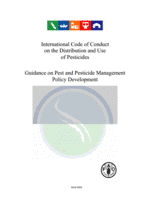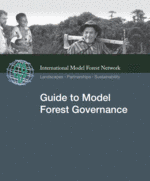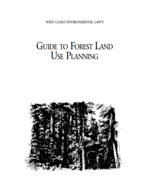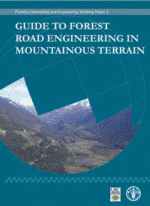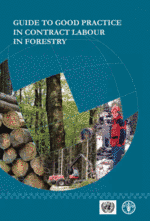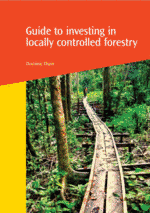Tools
A tool is a resource that supports and guides the implementation of SFM. This section includes all the tools available in the SFM Toolbox, which can be in form of publications, e-learning videos, software etc.
You can browse the Tools through keywords in the free search box or you can narrow the search using the filters on the right side of the page.
The purpose of this document is to provide guidance on pest and pesticide management policy development in support of pesticide risk reduction and sustainable agricultural production. It aims to encourage governments and other stakeholders to consider the question to what extent current pesticide use is actually justified. It places pesticide...
The first part of the Manual introduces the main steps of forest road network planning and gives guidance on road construction under different site conditions. It demonstrates good practices to minimize the area used for building purposes, to keep the environmental impact as low as possible and to maintain forest...
Model Forests are best understood as processes. They are also based on broad stakeholder involvement. Therefore, one of the most important early steps in developing a Model Forest is to clearly define an appropriate governance structure so that the roles and responsibilities within the Model Forest are clear to everyone...
Conservation finance generates new, long-term, and diversified sources of revenue for conservation. Professionals in this field work with stakeholders ranging from local communities to large multilateral finance institutions, private corporations, and country governments. They support conservation work that extends across ecoregions, landscapes, ecological hotspots, protected area networks, and large terrestrial,...
This Guide to Forest Land Use Planning provides a comprehensive source of information on the laws and policies respecting the use of public forest land in British Columbia. Most land use planning takes place within the framework of these laws and policies. By becoming familiar with them, those of you...
This guidance is written for practitioners, whose responsibilities include that of road access on steep ground, to assist with the development of improved professional practices in forest road engineering that are consistent with the basic principles of sustainable forest management. More specifically, it is written to promote the use of...
Within the past 20 years there have been many attempts to increase understanding for the situation of forestry contractors. Based on this recent work and experience, the idea has evolved to draw up a guide to good practice in contract labour in forestry, which outlines a wide variety of examples...
This guide provides the forest sector with clear and concise guidance on forest health practices, including plain language descriptions of the ISPMs and suggestions for their improved national implementation. The guide has been prepared through a consultative process involving an international group of scientists, phytosanitary authorities and forest sector representatives...
This guide to Investing in Locally Controlled Forestry (ILCF) is an outcome of the Growing Forest Partnerships initiative that engaged The Forests Dialogue to co-ordinate 11 wide-ranging dialogues involving investors, rights-holders, governments, donors and others on this topic. It is primarily a tool for practical action and its advice draws...
The Center for International Forestry Research (CIFOR) has developed various participatory tools specifically for use with forest communities and other natural resource dependent groups. Some of these tools are adaptations of existing methods; others were created specifically for work with forest dependent communities. The tools have diverse applications: stakeholder identification,...

